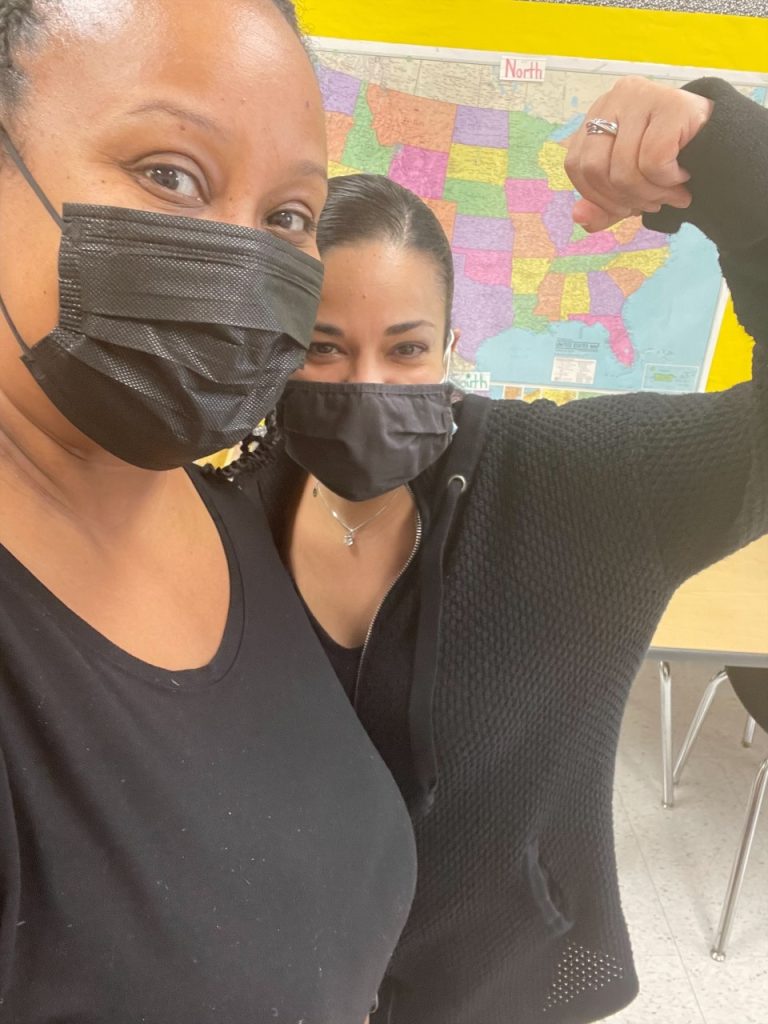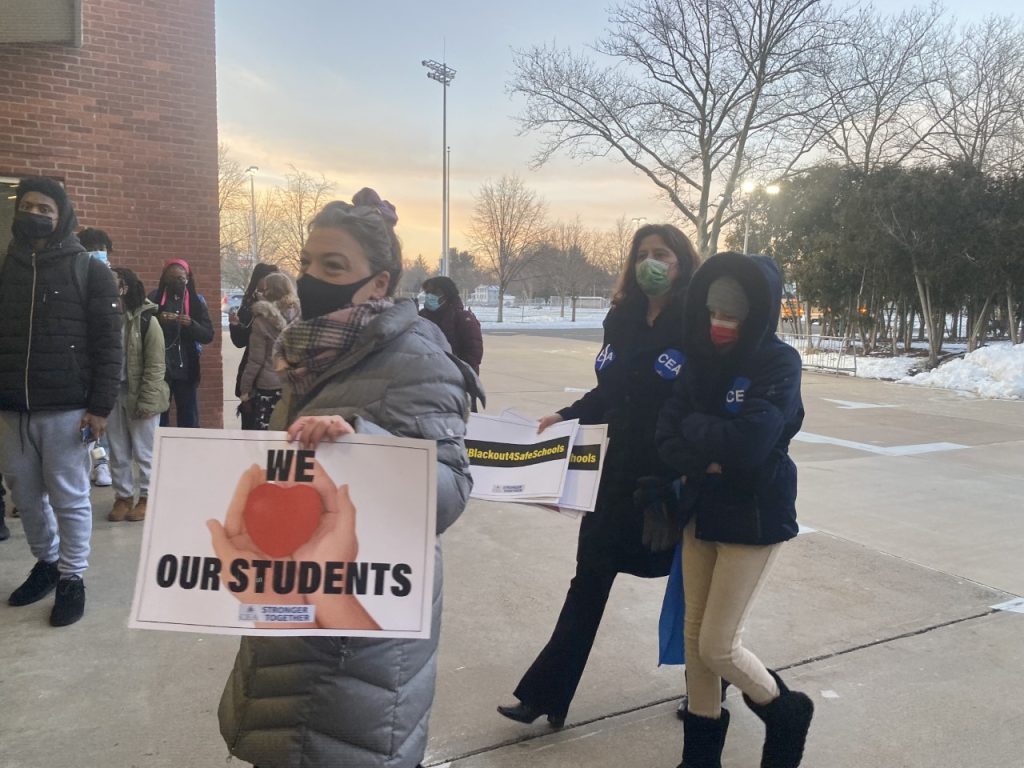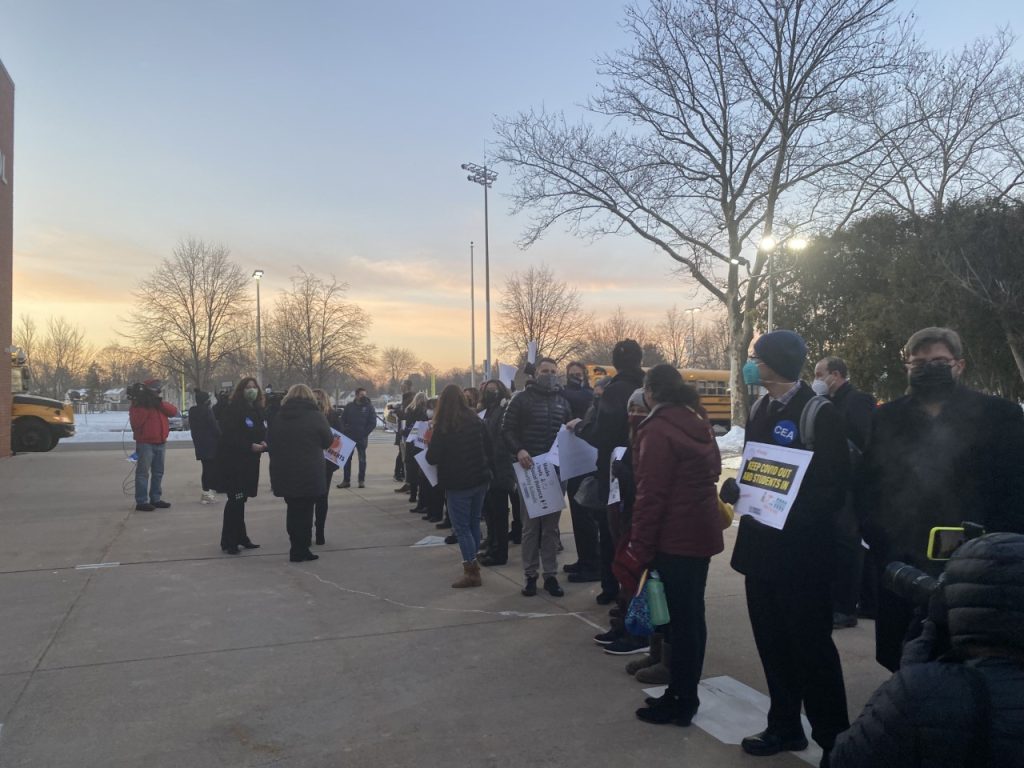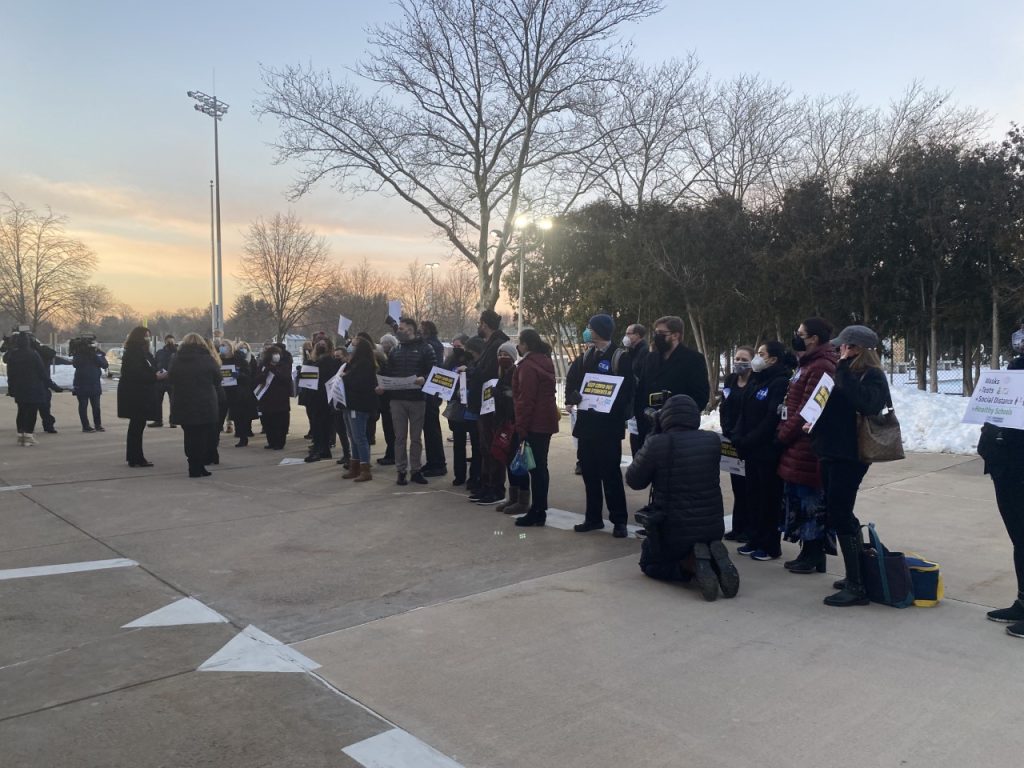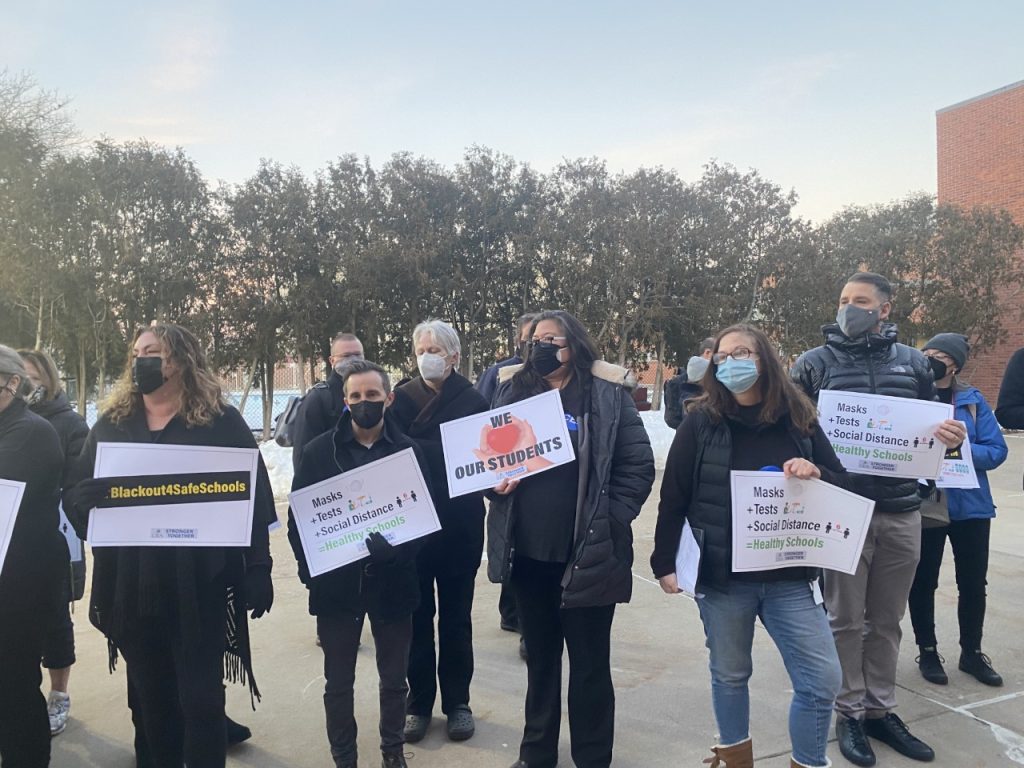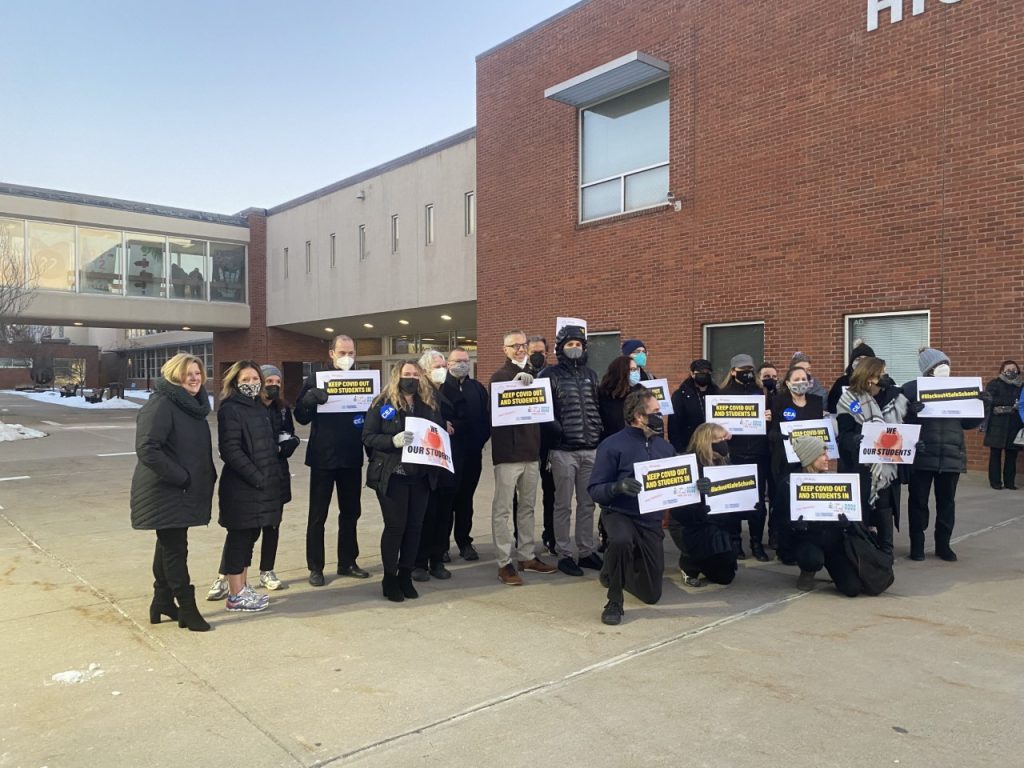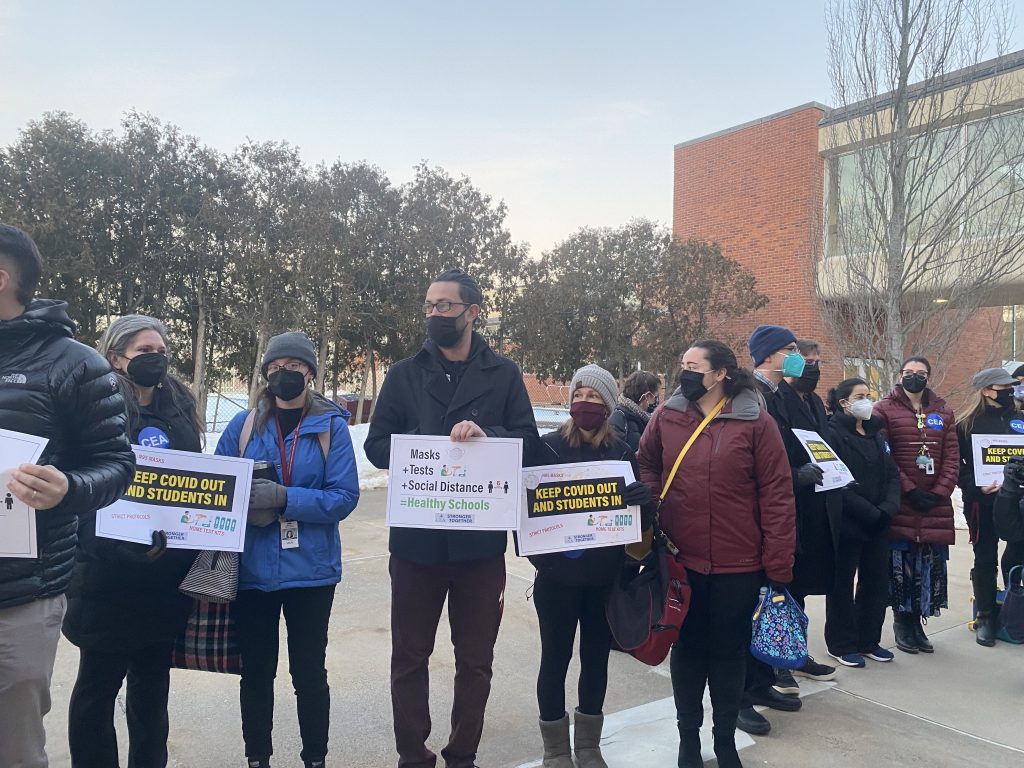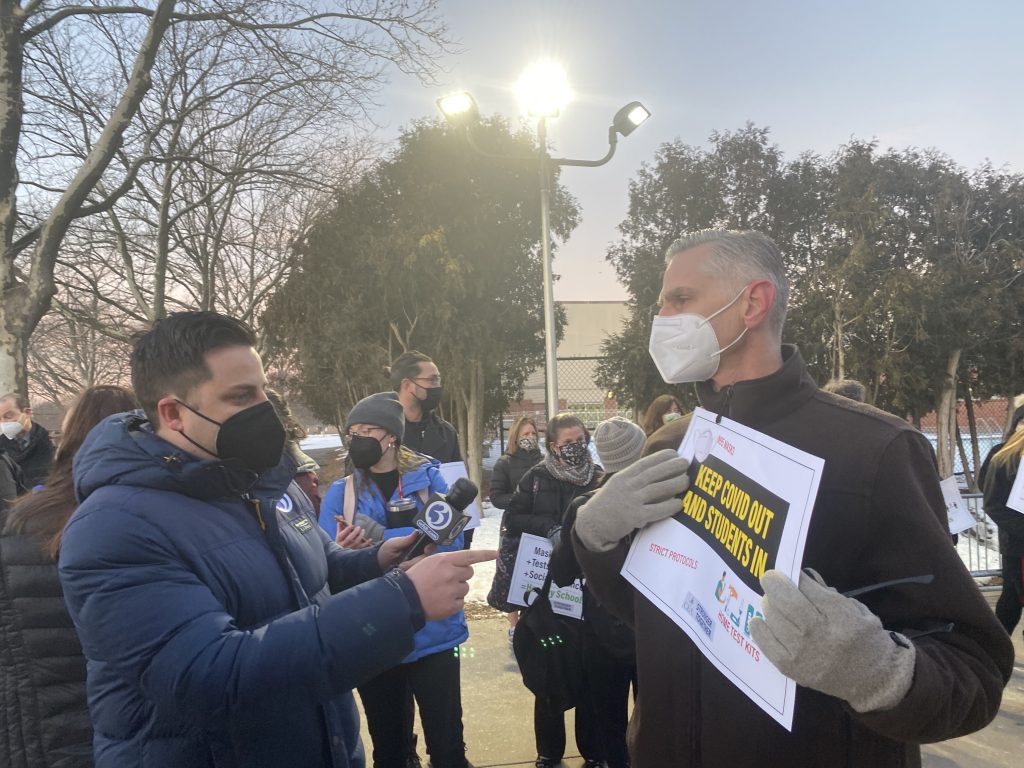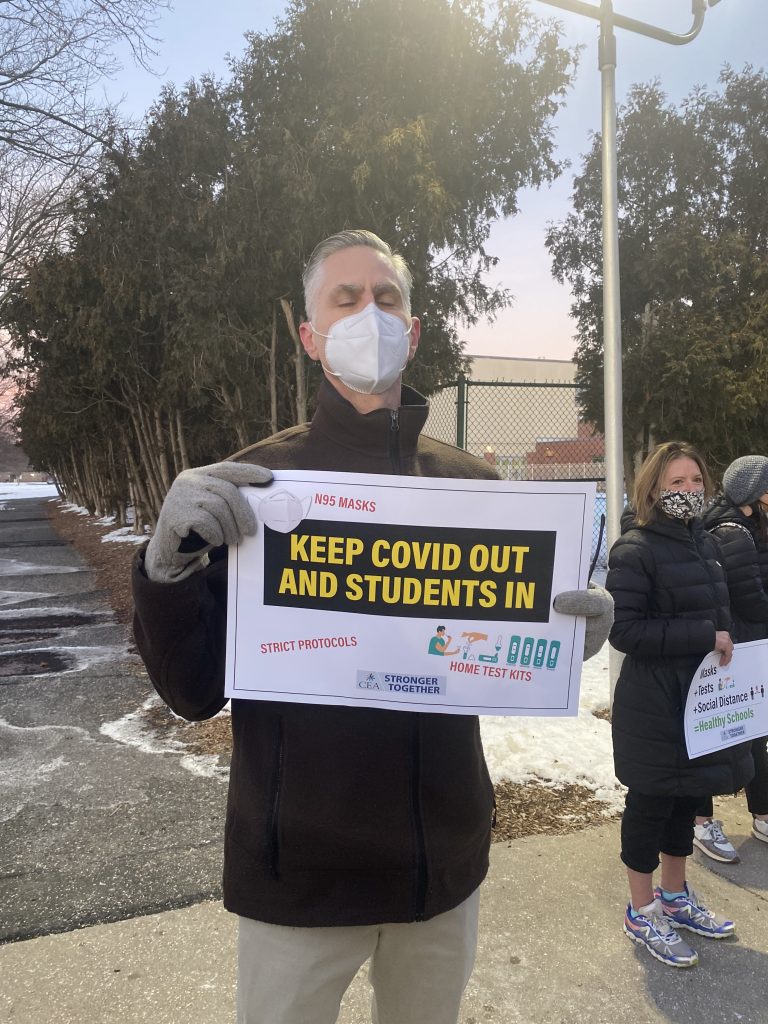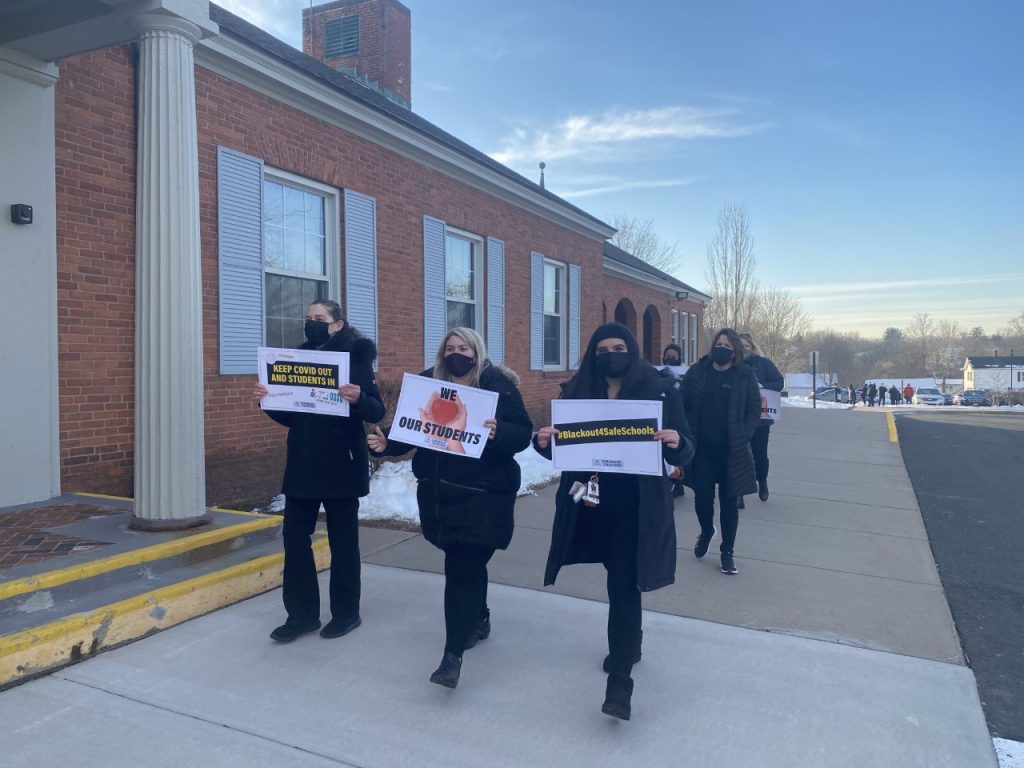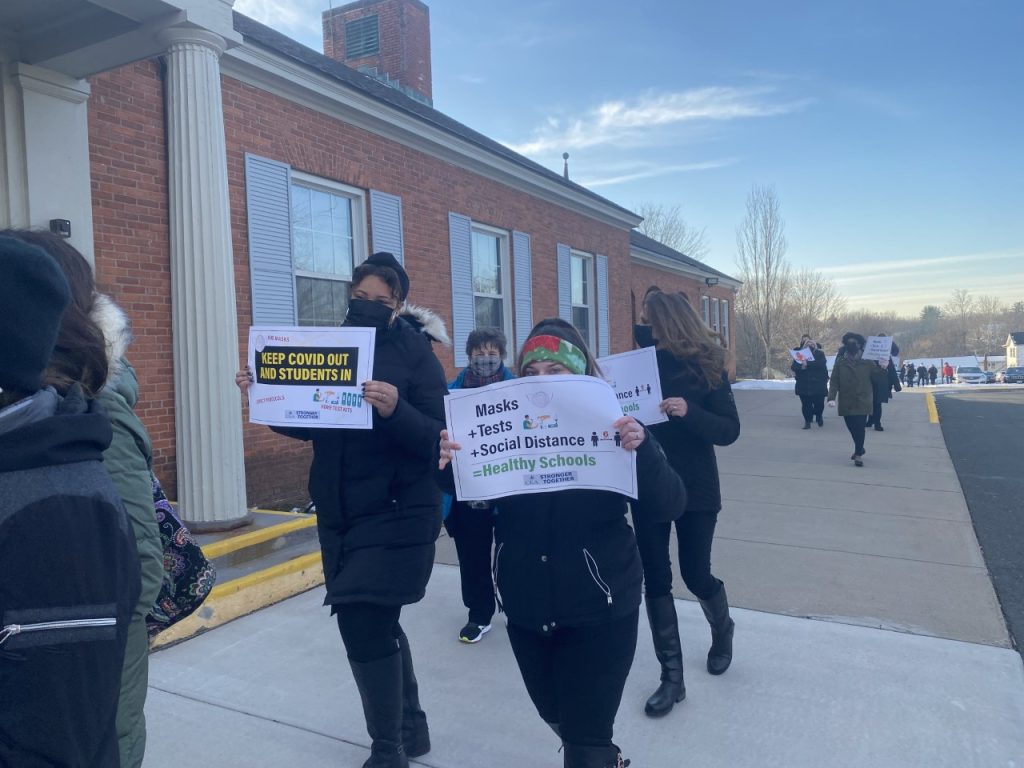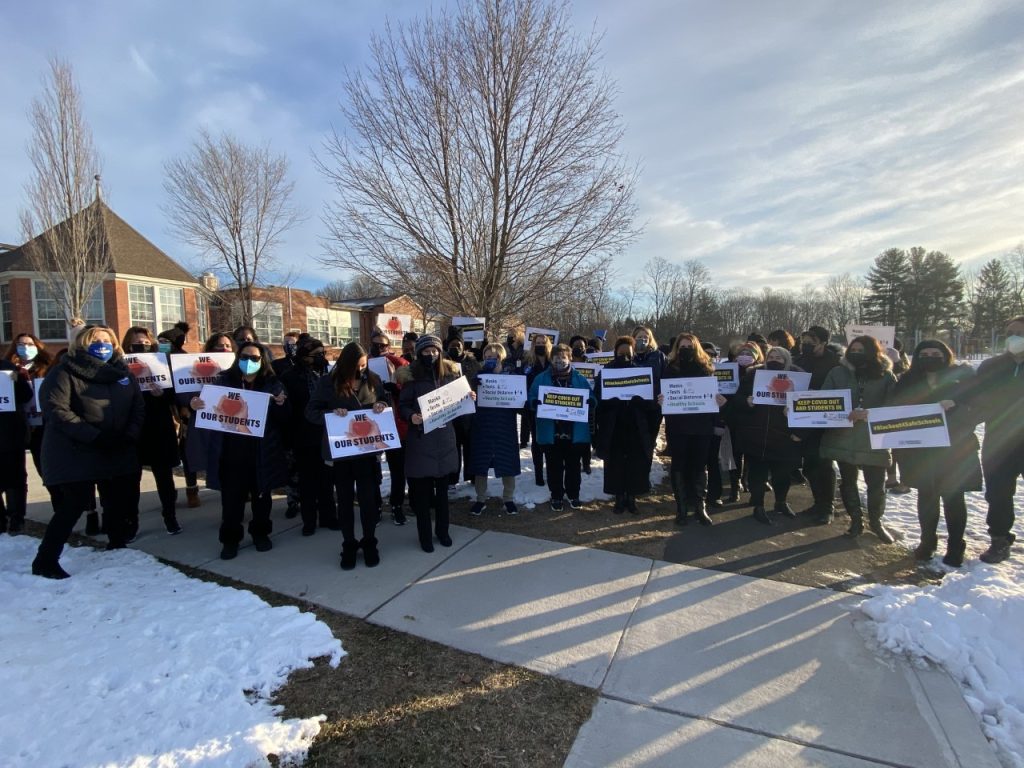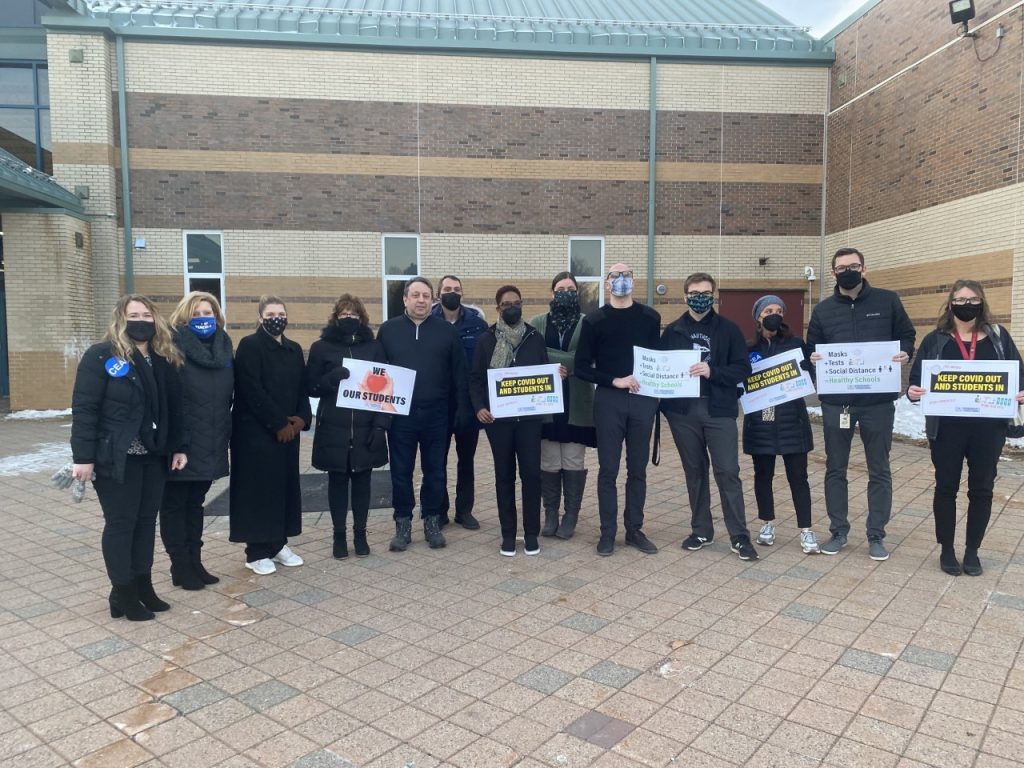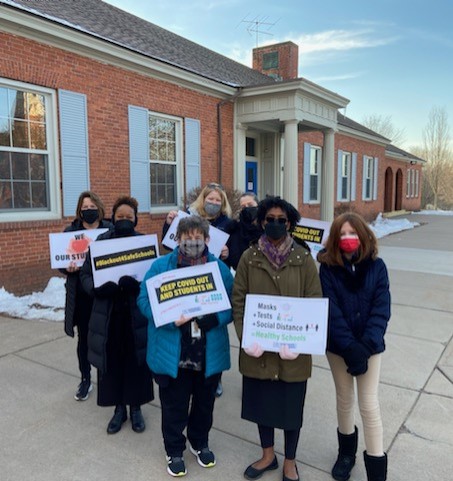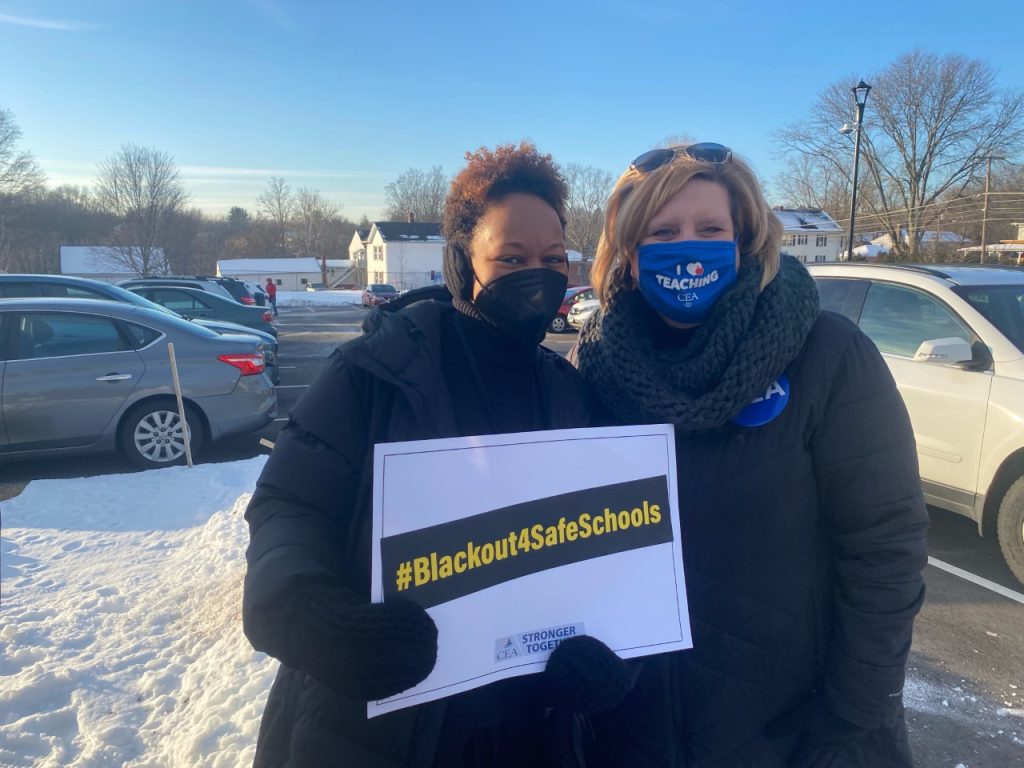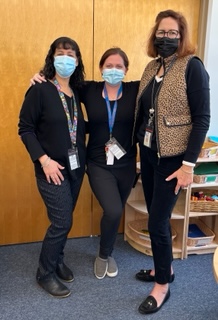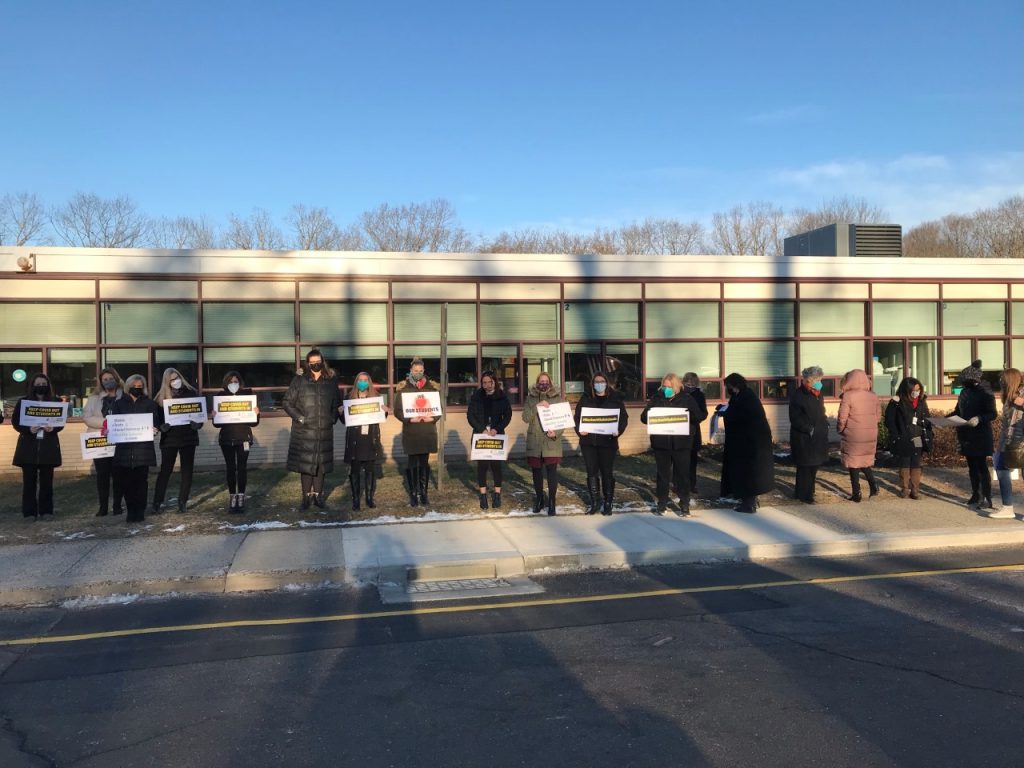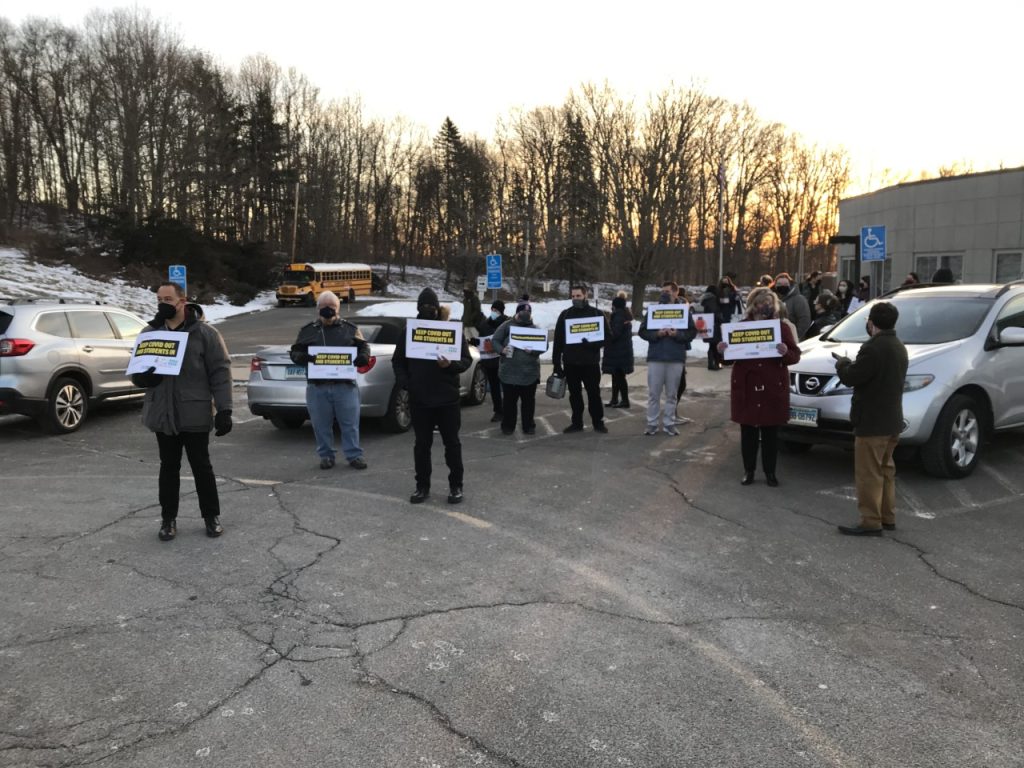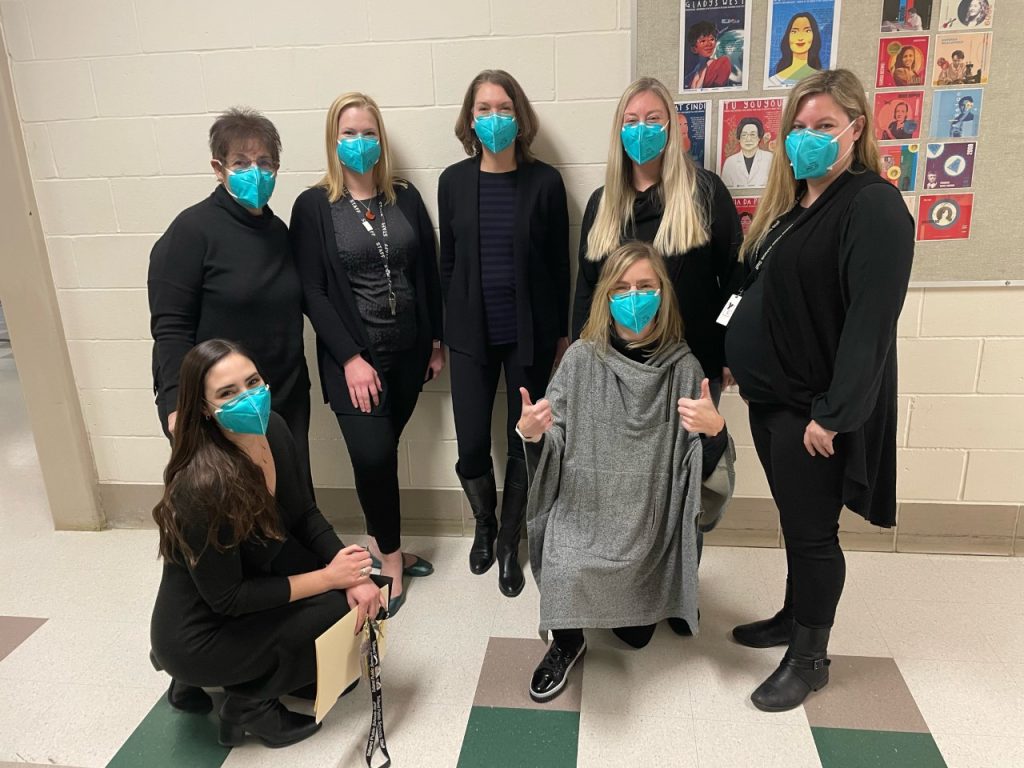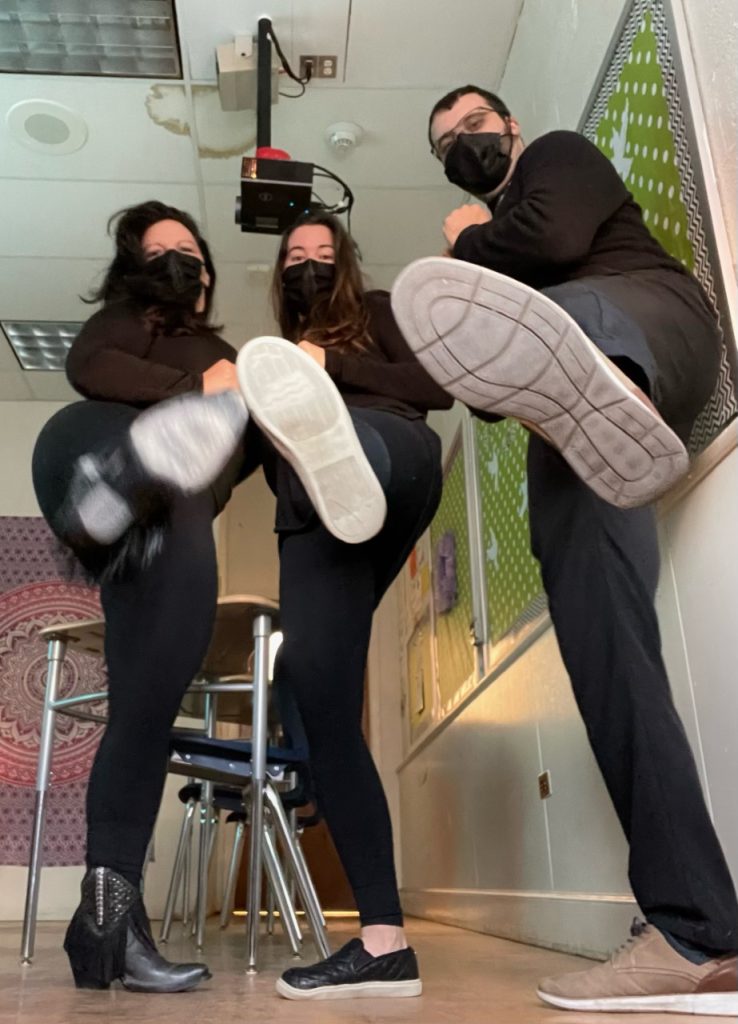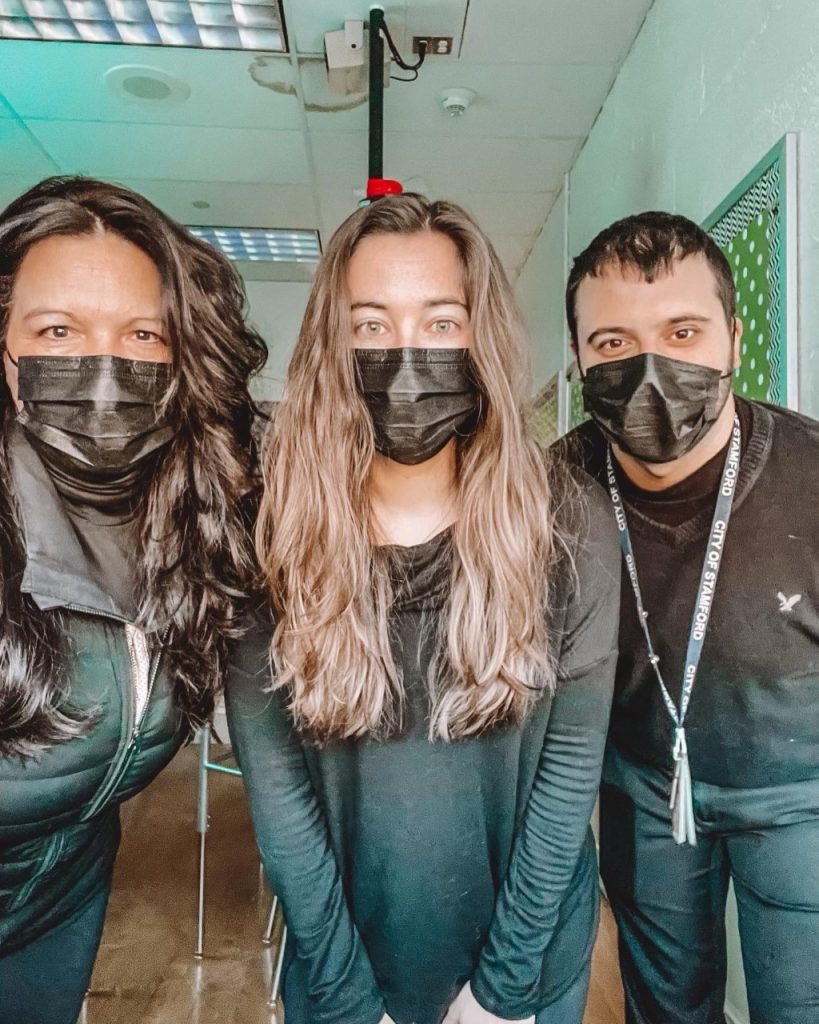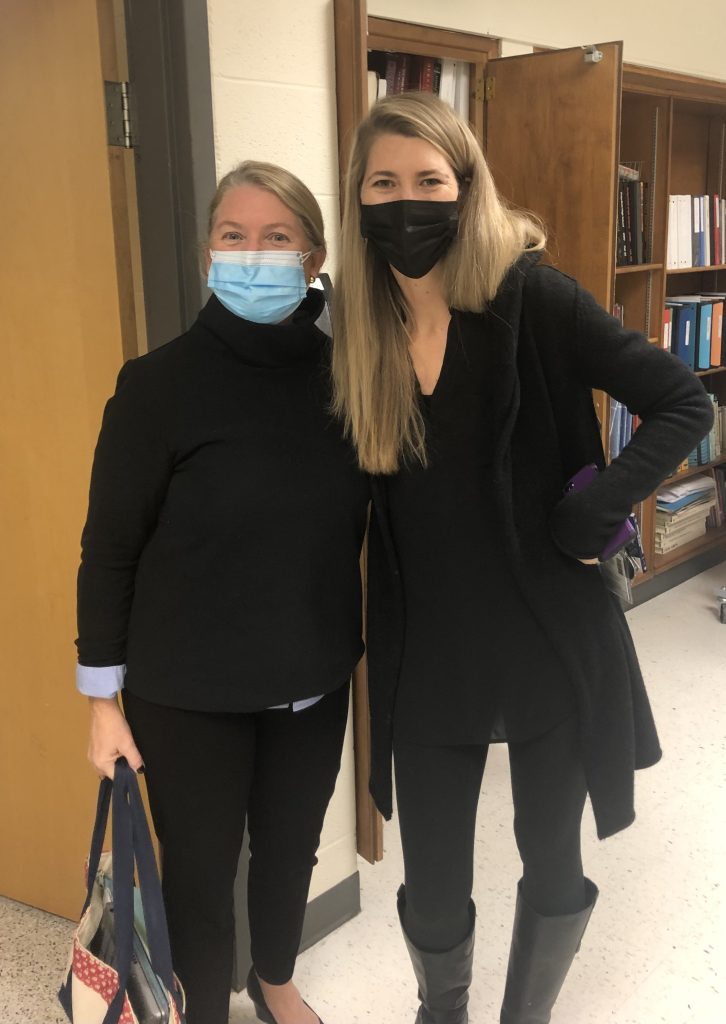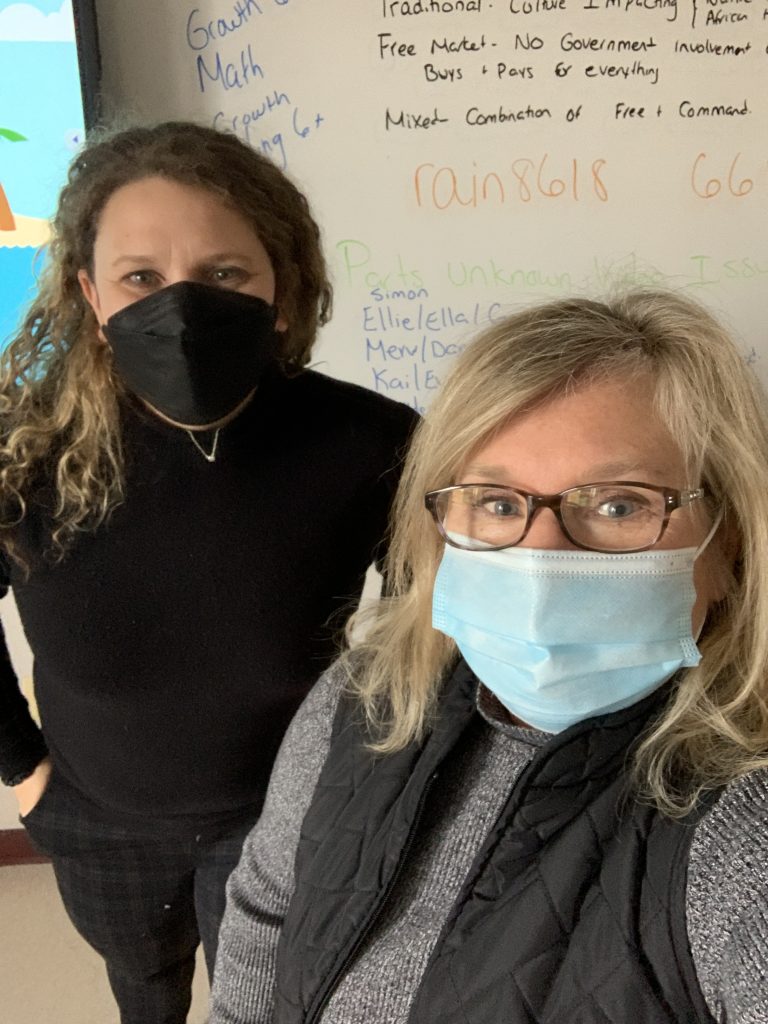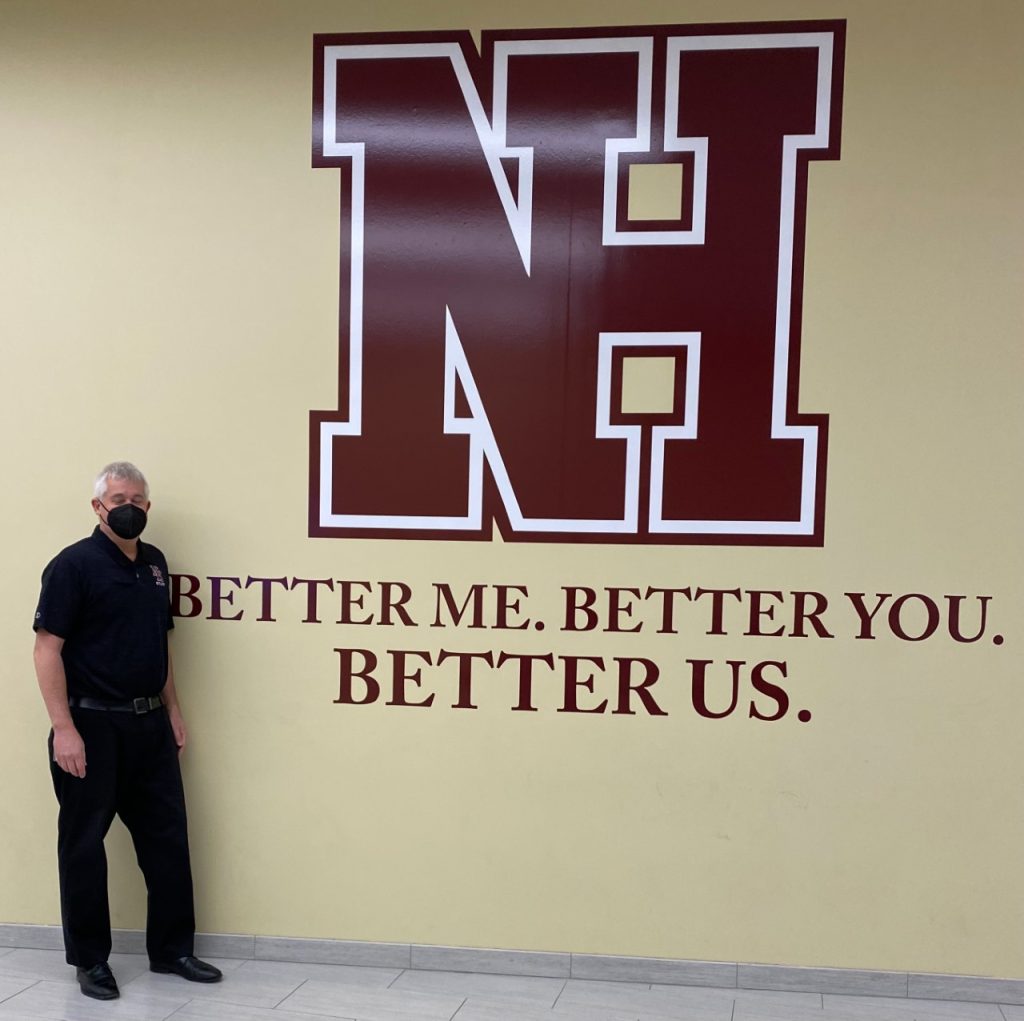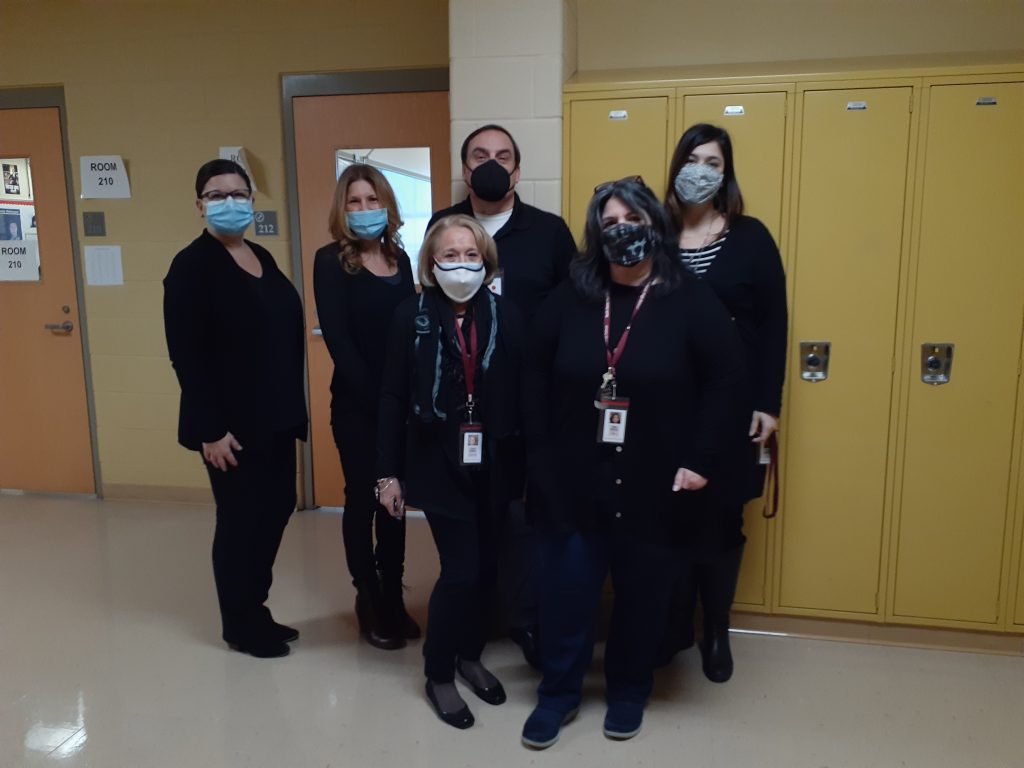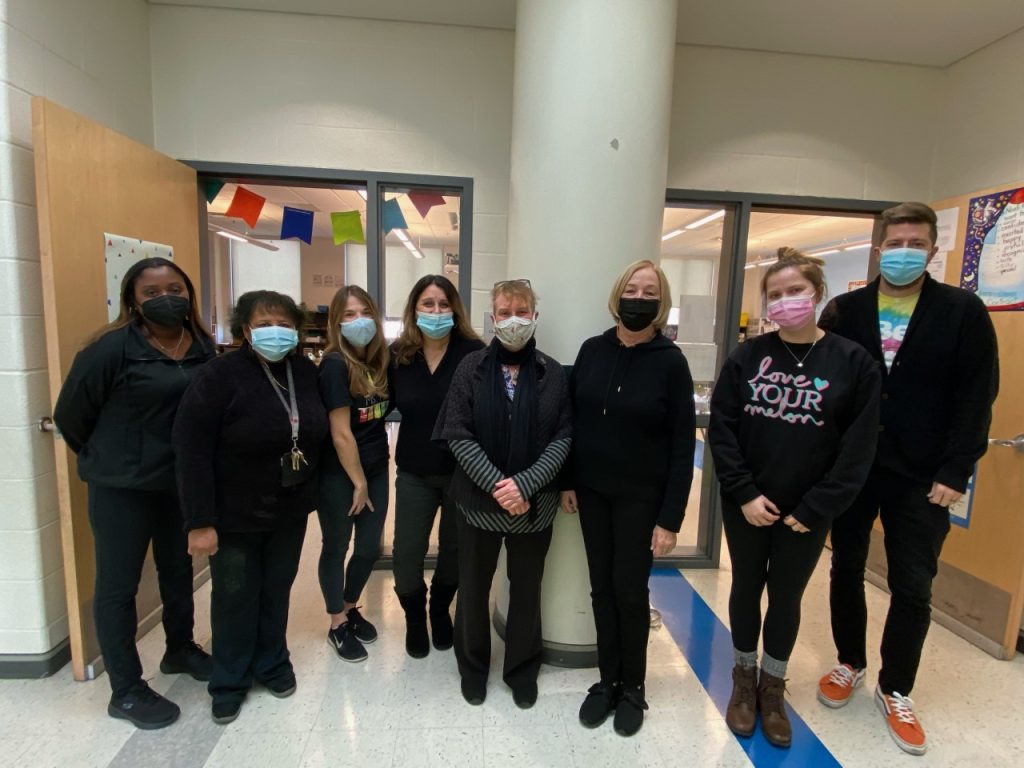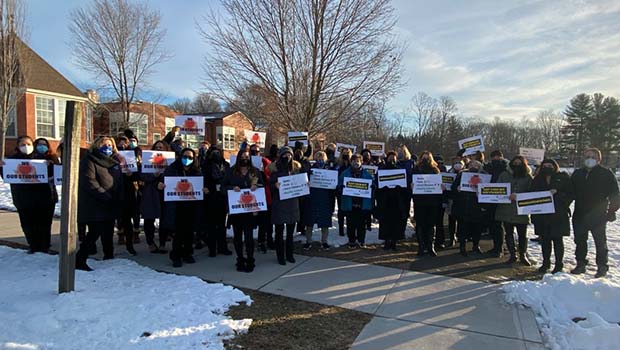“We are two years into the pandemic and we still don’t have what we need. We work so hard, and this is heartbreaking,” said Misty Holke, a Poquonock Elementary School teacher who participated in today’s statewide blackout in public schools. “As teachers, we fear for our students and put them first, but we also fear for our own families. We need more communal support.”
Holke was among thousands of teachers and school staff taking part in today’s blackout to draw attention to the need for more safety protocols in schools. The blackout was organized by CEA and other members of the Coalition of Board of Education Employee Unions who represent educators, paras, custodians, nurses, cafeteria workers, bus drivers and monitors, and support staff.
“Educators continue to show up every single day to make sure all kids are taken care of, despite all of the challenges we’re facing,” said CEA President Kate Dias, who joined CEA members in Windsor this morning who held signs and walked into school together in a show of solidarity. “We need to do more to keep schools safe.”
Dias said the state needs to provide more masks and more testing in order to keep schools open safely. “We need to slow the spread of the virus, and if we don’t have testing and masks we’re going to end up with mass absenteeism, and that will stop schools in their tracks.”
![]()
![]() Educators believe that in-person learning is best for students, but right now staffing shortages are so severe in some districts that schools have been forced to close or go to half days.
Educators believe that in-person learning is best for students, but right now staffing shortages are so severe in some districts that schools have been forced to close or go to half days.
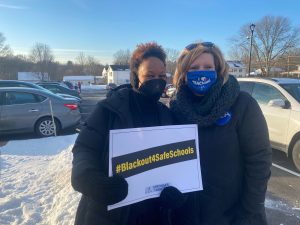
2021 CT Teacher of the Year and Windsor kindergarten teacher Rochelle Brown and CEA President Kate Dias outside Poquonock Elementary School.
“In-person learning is a priority, but we also need to be flexible,” said Dias. “We need to have the opportunity for short-term remote learning to provide relief when schools suffer from inadequate staffing. There are situations right now when a day or two of remote learning would be just what a district needs to get through a crisis.”
Because superintendents currently don’t have the option to chose temporary remote learning, they are left with an all-or-nothing approach that leads to canceling school all together. Dias added that when large numbers of students are absent and many classes are being combined or taught by substitutes, students don’t learn very much. In such situations, remote instruction would allow for student learning to continue.
“If you have 15-20 percent of staff absent that places a tremendous burden on the teachers in the building who are being asked to be a teacher and a half. That’s really stressful, and it takes a toll,” she added.
Additionally, days in June aren’t the same as days in January. “The days you add in June don’t add to instruction in a meaningful fashion,” Dias explained, saying that particularly for AP students who take their tests in May, adding days in June is meaningless.
“We’re not looking for weeks of remote instruction—none of us want to return to that experience—we recognize this as a limited approach, but it needs to be a tool.”

Teachers around the state participated in the Blackout, including those at Dolan Middle School in Stamford.
Jeremy Jorgensen, a Windsor High School biology teacher and building rep said he participated in the blackout and this morning’s walk-in to support his fellow educators and draw attention to the need for safe schools. “Right now teachers are asked to do more and more with less and less. The pandemic is unfortunately holding a big cloud over our heads. Students, parents, and teachers are looking for more support, and we’re asking the Board of Education and administrators to show students and teachers more support.”
“As teachers, we are making thousands of decisions a day to keep our students safe and do what’s best for them,” said Windsor kindergarten teacher and Connecticut 2021 Teacher of the Year Rochelle Brown. “We’re thinking about them and their families, and our own families, and we just want to remain safe and keep our students in school because we know it’s best for them to be here in the building. We want kids in school so we need the proper equipment in order to stay safe in school.”
Diondrea VanHouten, the school nurse at Sage Middle School, told teachers, “I’m thanking everyone for dealing with this process and the pandemic. I know it’s been difficult for everyone, especially the school nurse, so I’m trying to support you all as best as I can.”
“Students struggle with masks, and it’s hard to keep them spaced apart and socially distanced because there is not enough room,” said Windsor High School math and computer science teacher John Guzauckas. “As a teacher, it’s hard for me to work closely with my students without putting them or myself at risk, and that’s impersonal teaching.”
Cay Freeman, a Windsor special education teacher, added, “The bottom line is, kids need to be in school, and for us to do our job we all have to be safe. We are here in this big group standing together because we want to be here with our students. We are teachers who are dedicated to our jobs and our kids, and we are showing that we want to stay in school, but we have to have the tools to stay here.”
Speaking out across the state
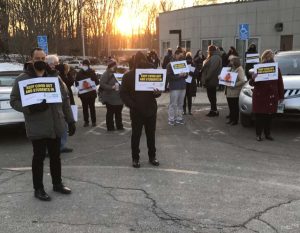
Teachers at Moran Middle School in Wallingford say they have received supplies to slow the spread of COVID, but they participated in the blackout to show support for colleagues in other districts.
“We’re really concerned about the conditions we have in schools, and making sure that they’re safe so that we can remain in school—in-person learning is obviously best,” CEA Vice President Joslyn DeLancey told New 8. She took part in a walk-in with teachers in Wallingford this morning, who say they feel supported and have received N95 masks and testing kits but joined the blackout in a show of support and concern for their colleagues in other districts.
In Ledyard, Ted Allen, a middle school science teacher and co-president of the Ledyard Education Association, said he and his colleagues feel that the state cares more about avoiding a shift to virtual learning than about people’s health.
“’We’re going to have COVID, just keep doing what we’re doing,’” is the state’s attitude right now, Allen told The Day. “‘Half your kids are out sick? That’s OK, catch them up when they get here.’ This is what the teachers locally are most talking about, this complete head-in-the-sand approach we seem to be having right now.”
Stonington Education Association President Michael Freeman and William Priest, president of the Norwich Teachers League, joined Allen in speaking with The Day newspaper about the importance of today’s blackout.
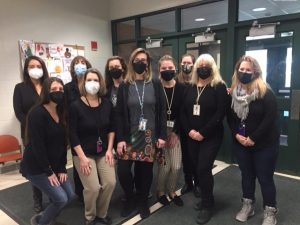
Teachers and staff at Western CT Academy of International Studies Elementary Magnet in Danbury stand up for safe schools.
“I think Stonington Public Schools has done what they can with the limited resources that the state has provided. The number of masks and home tests has been limited by the state’s underwhelming performance in these areas,” said Freeman. “The focus of our frustration is not with the leadership of Stonington Public Schools.” He said that members are instead frustrated with “the leadership or lack thereof” of Gov. Ned Lamont and the state departments of Education and Public Health. “They appear tone-deaf to the needs of individual districts and are politically set on a ‘one-size-fits-all’ approach.”
“We’ve received N95 masks, but we need more masks. That is one of the biggest concerns, that, access to testing, and there are a lot of teachers out right now with symptoms,” said Priest. “Governor Lamont’s unwillingness to consider having remote learning… if all the staff members are sick, how do you staff a school?”
“I am really proud of our educators,” said Dias. “They’ve come together today to show support for one another and really say, ‘We are working really, really hard, and we deserve the supplies and support we need to keep the job going.’ These are really hard working, dedicated teachers who are committed to their schools and their students. I was really proud to see how many came together to acknowledge the work we do is important and deserves to be recognized and supported.”
Share your photos on social media with the hashtag #blackout4safeschools.
